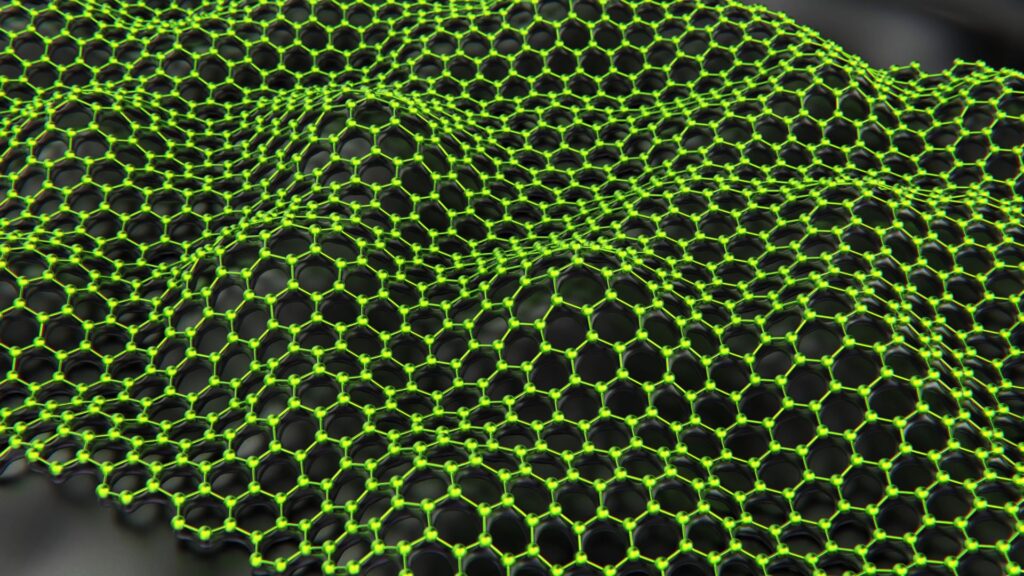Graphene is a nanomaterial: composed of nanoparticles, it is structured on a microscopic scale. In addition to other advantages, such as its flexibility, it could revolutionize medicine. But its dangerousness remains to be measured, when we really confront it with human biology.
“ Nanomaterials such as graphene show great promise “, says researcher Mark Miller, before qualifying: “ But we need to ensure they are made safely before we can use them more widely in our lives. »
A nanomaterial — composed of nanoparticles — is very different from others: its material structure extends between 1 to 100 nanometers. A tiny size, since 1 nanometer corresponds to… 0.000001 millimeter. At this scale, nanomaterials have very specific physical and chemical properties. This is the case for graphene.

This nanomaterial is extremely flexible in addition to being extremely conductive. Among its possible uses, the world of electronics is eyeing its potential – for our smartphones for example. But this is also the case with medicine. Graphene nanoparticles could revolutionize targeted cancer therapies; as well as the treatment of heart problems thanks to more sensitive sensors implanted in the body.
The “nano” scale, in medicine, could therefore help to penetrate more precisely and deeper into the human body to treat it. The other side of the coin is that, because of their small size, these nanoparticles could also do more harm than good — by interfering with the normal functioning of our organs.
10 years of research to arrive at this study
At the University of Edinburgh, tests are taking place to put graphene to the test in the biological context of the human body. Cardiologist Jack Andrews and his team recruited 14 volunteers. Their mission: to inhale graphene oxide nanoparticles. In short, inhaling nanoparticles. Different concentrations were tested. All their vital functions were recorded before and monitored after inhalation: blood pressure, coagulation, inflammation markers, pulmonary function.
“No adverse effects”
This monitoring, reported in a study published in Nature on February 16, 2024, did not identify any particular problem in the bodies of the volunteers: the exposure was “ well tolerated ” And ” did not cause any adverse effects “. The authors conclude that these results “ demonstrate the feasibility of carefully controlled human exposures in a clinical setting », at least with regard to graphene oxide.
Even if this study may seem minimal in its scale – this type of test will also have to be carried out outside laboratory conditions and with many more people – the science goes a long way: “ It took us over ten years to develop the knowledge needed for this research, from a materials and biological science perspective, but also from a clinical ability perspective to perform these controlled studies safely, bringing together some of the world’s leading experts in this field. »
Nanotechnologies, applied to our daily lives, seem to be only at the beginning of their advent.


Subscribe to Numerama on Google News so you don’t miss any news!
